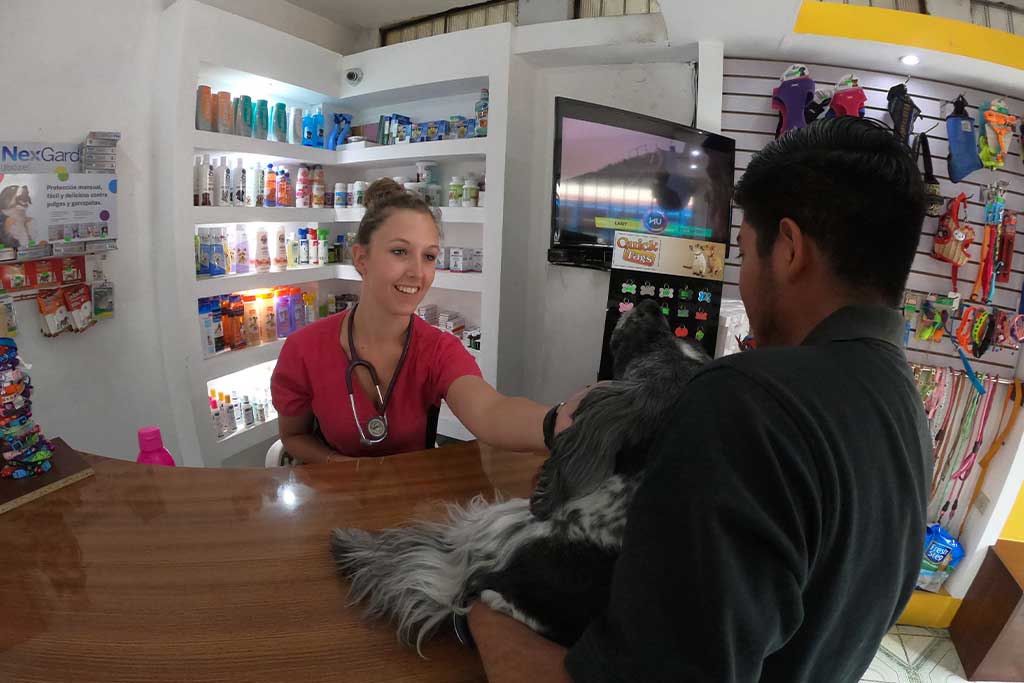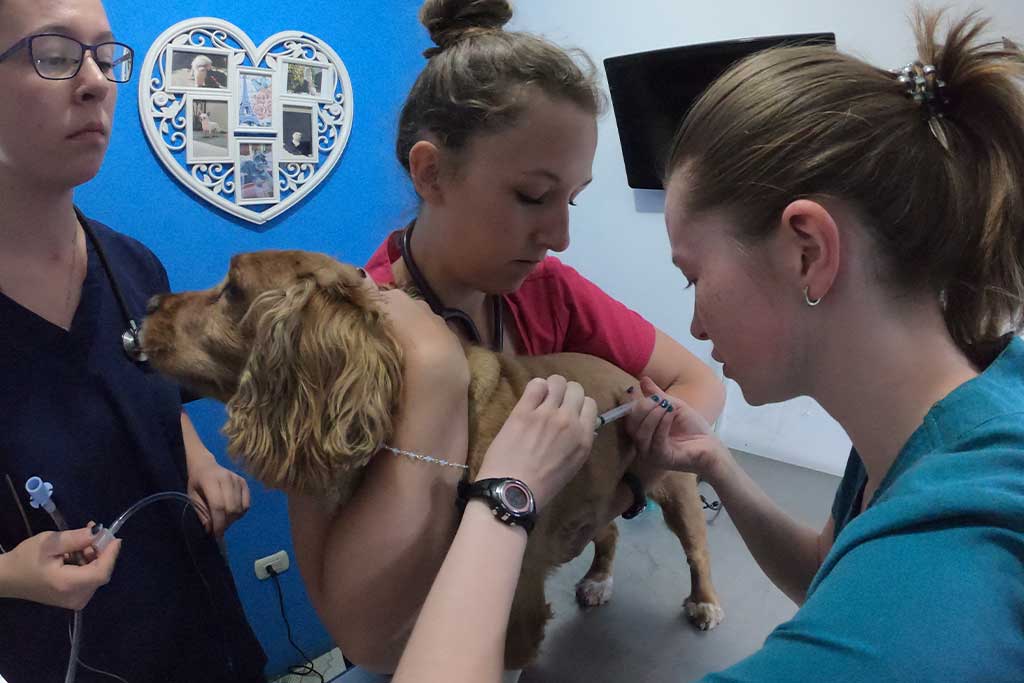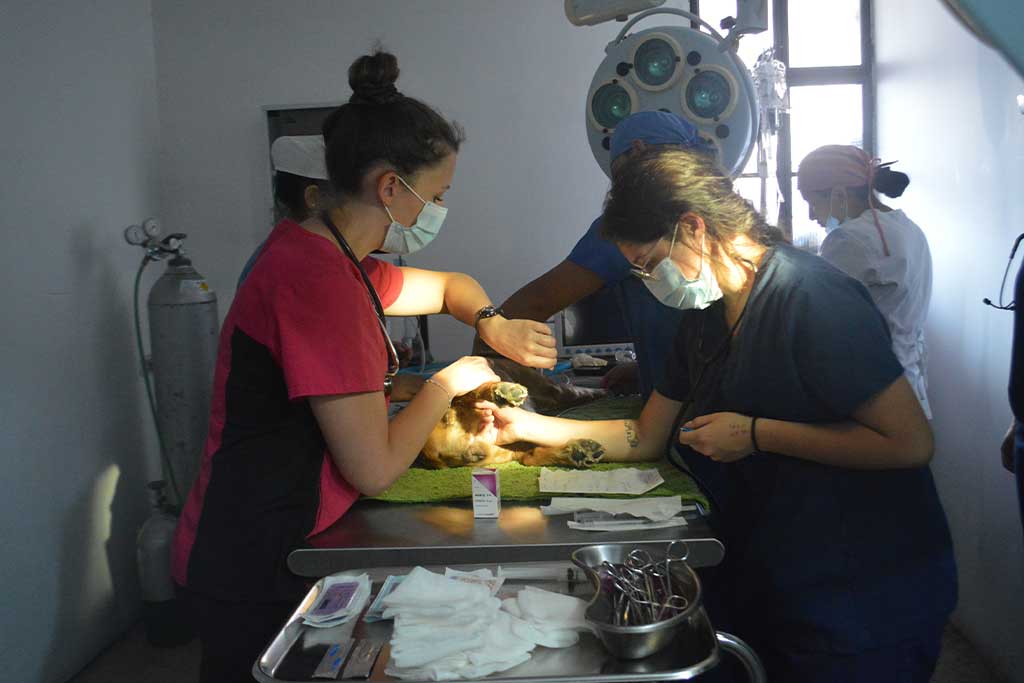Anatomy, physiology, veterinary surgery—all of these disciplines lend themselves to experiential learning. It is so much more practical to master veterinary science in a medical setting than in a classroom. Even though textbooks and models can provide an important foundation in biology and medical terminology, immersion is the truest teacher. I studied biology and animal sciences at university, an emphasis which naturally aligned with my desire to go to veterinary school.
When I finished my bachelor’s degree, my brain was an arsenal of abstruse anatomical terms. But despite the mountains of flashcards I had accrued, I was nervous to see what the world of animal healthcare would really be like. Now, I’m in my third year of vet school and I’ve certainly gotten more hands-on experience than I did from simply reading biology textbooks. However, unlike other forms of medical school, not all veterinary programs in the United States require residencies. So before graduating with a doctorate in veterinary medicine, I wanted to gain as much field experience as possible.
Over the past seven years, my collegiate career had left little room for travel; I hadn’t found any viable study abroad programs in my disciplines during university. That’s why I decided to pursue an international internship before completing my veterinary program. I wanted more in-person experience before branching out on my own and there was no reason I couldn’t do that abroad. So I pushed pause on my day-to-day responsibilities and took a month off to live and work in Antigua Guatemala. I organized my trip through Máximo Nivel as soon as I saw that they offer four-week practicums in veterinary science.

When I arrived in Antigua, I was taken to my internship placement: a small veterinary clinic in the neighboring community of Ciudad Vieja. The veterinarian that I worked with was patient and welcoming. He did not hesitate to take a back seat, ensuring that I had a hands-on experience. However, he was present to close gaps in my Spanish vocabulary when I was conversing with pet owners. I also took daily Spanish classes at the Máximo Nivel institute, which helped me improve my language skills for a medical context.
Just as I’d hoped, my practicum was the epitome of experiential learning. From consultation to treatment, I was interacting with the animals and their owners daily. Working at a clinic for a month was fieldwork in its most practical manifestation. I was able to assist with almost every aspect of the veterinary office’s operations. I observed surgeries, such as spay and neuter procedures and tumor removals, and monitored the animals during their recovery. I dressed the wounds of cats and dogs who had been in fights. I assisted with routine checkups and consultations and kept patient files up to date.

I also worked the front desk on a few occasions and regularly interacted with community members who were bringing in their pets. One aspect of the internship that I hadn’t foreseen was how much time the staff and I would spend on educational initiatives. The clinic is trying to serve the Ciudad Vieja community both medically and educationally. Regular appointments can save pet owners so much grief. However, preventative care for animals has not been normalized in Guatemalan culture. In many developing economies, animal healthcare providers face opposition from their communities in addition to typical medical challenges.
A lack of resources often prevents pet owners from prioritizing the care of their animals. Therefore, the clinic I worked at is making a conscious effort to encourage better practices. Owning a pet should be met with responsibility but animals in Guatemala are often left unvaccinated, unneutered, and suffering from preventable medical conditions. During my time in Antigua, I saw how the cultural paradigm is at battle with the wellbeing of domesticated animals and consequently the overall safety of the community.

In an effort to curb misconceptions surrounding animal care, the clinic had printed pamphlets that emphasized the importance of checkups. For example, many pets live with uncomfortable skin conditions, ticks, and worms. If they are treated early on, these health complications are non-threatening. However, left unchecked, a simple bacterial infection can cause an animal’s health to completely deteriorate. Moreover, failing to vaccinate cats and dogs puts the animals themselves, as well as anyone they come into contact with, in danger. Because of this, the clinic runs bi-monthly vaccination campaigns to defend homeless and neglected dogs against rabies and other common infectious diseases.
The local staff I worked with are doing what any veterinary workers would: helping animals live the best lives they possibly can. This calling supersedes cultural barriers. But even though veterinary medicine is a fairly standardized field, my month in Guatemala exposed me to different bodies of thought surrounding animal care. Because I was constantly adapting to a new world of communication styles, expectations and medical resources, my practicum was excellent training in flexibility. This openness to the unexpected is particularly valuable in a field that is inherently unpredictable. You can rarely anticipate medical emergencies.

In addition to learning to adapt to real-life situations, interning in Central America gave me cross-cultural insights on animal healthcare. Working alongside local professionals and speaking with pet owners from the community taught me so much about how veterinary medicine is perceived in Guatemala. I am grateful to have gained practical experience while developing a more global perspective on veterinary science. At the end of the day, all veterinarians have the same aim and I hope that educating local pet owners will continue to shape Guatemala’s animal ownership culture for the better.
